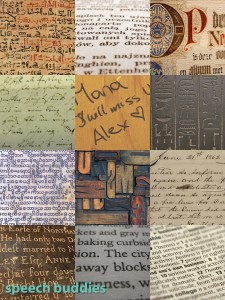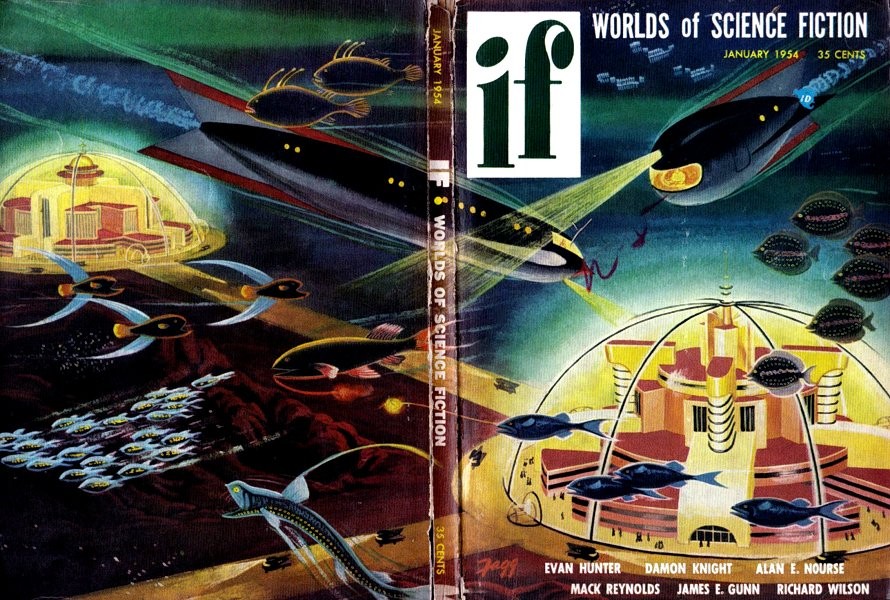Strange Sounds Around the World — Explained!
Geek-Out Alert! This post is where the geeks glove come off, as they say. I am about to becoming an unapologetic, unabashed geek about one of my all time favorite topics: the crazy sounds of the world’s languages. As you might imagine the clinical founder of Speech Buddies, a revolutionary, evidence-based tool set for treating speech sound disorders, has a deep interest in phonetics. Phonetics is the branch of the social science of linguistics that studies how sounds are produced, where the tongue is placed, how it moves during speech and how the air flow is shaped. I will come out right now and admit that on down time, when my kids are asleep and I finally have an hour to myself, I will actually listen to clips of speakers of some of the world’s most fascinating and (let’s call them crazy) languages. I wanted to share some of these exquisite examples of the human sound production system and perhaps to spark an interest in you for yet another wonder of nature.
I should say up front that to fully appreciate the diversity and wonder of the sounds of the world’s languages, it is really helpful to have some background in phonetics. This background need not be formal, or in the form of a course, but it should be rigorous and scientific. The Wikipedia page on phonetics is a good initial reference point, although I will attempt to summarize things for you here. I am going to focus on consonants today since they are so much more diverse in the world’s languages.
What Makes a Consonant
 Each consonant speech sound can be said to have three main properties that make up its output: voicing (is the sound voiced or voiceless?), place of articulation (within the oral cavity), and manner of articulation (what type of sound it is). Let’s use the English /d/ sound as in “dog”. We call this a voiced alveolar stop.
Each consonant speech sound can be said to have three main properties that make up its output: voicing (is the sound voiced or voiceless?), place of articulation (within the oral cavity), and manner of articulation (what type of sound it is). Let’s use the English /d/ sound as in “dog”. We call this a voiced alveolar stop.
- It is voiced because when the sound is produced, the speaker vibrates his or her vocal cords. You can feel this vibration clearly if you touch your own throat as you speak the /s/ sound. By contrast, you won’t feel a vibration if you sat the /t/ sound.
- It is called alveolar because the tongue needs to be placed on what’s called the alveolar ridge. The alveolar ridge is on the gums right where your gums meet your upper front teeth. Say /d/ again and you will feel this placement.
- And finally, /d/ is called a stop sound because the flow of air coming out of the lungs must be momentarily stopped. Say /ada/ slowly and you’ll hear (and feel) this stoppage of the air on the /d/ sound.
Using this voicing/place of articulation/manner of articulation rubric, we can describe the sounds of the languages of the world — for the most part! It does get a little more complicated than this at times. The International Phonetic Alphabet (IPA) describes all of these sounds according to this rubric and is meant to illustrate exactly how a sound should be produced without the confusion of spelling or the need to learn, say, the Arabic or Japanese writing systems. Don’t expect to understand the IPA right away. However, if you scroll down on the linked Wikipedia page above, each sound has an associated page and an audio clip showing you what it sounds like. Pretty cool, eh?
American English Pronunciation
So why not start our exploration of these sounds with our own American English? If any readers out there are native speakers of language other than American English, you will know that our /th/ (as in “the” and “think”) and /r/ sounds are particularly challenging to master. In fact, these are two of the latest-developing speech sounds in American English. Linguists have long understood that, for the most part,
the sounds that are acquired latest in a child’s development are the sounds that are the most phonetically complex.
There are some effects of how frequently a sound is used in a language. For example, the /v/ sound is typically acquired in French children before that of English-speaking children, because /v/ is so common in the language. But, in general, the more complex a sound it is, the harder it is to learn, either as a child or as an adult. Only a small percentage of the world’s languages have this American English /r/ sound. Mandarin Chinese has this sound, also some widely spoken languages of southern India, such as Tamil, Kannada and Malayalam. Oh, and don’t forget Enindhilyagwa and Pitjantjatjara! As for /th/, listed on the International Phonetic Alphabet as the voiced /ð/ (as in “the”) and the voiceless /Ɵ/ (as in “think”), Arabic, Greek, Welsh, Swahili and European dialects of Spanish contain these sounds, but very few others do. This contrasts with the /b/ sound, which is nearly universal in the world’s languages. So, first off, let’s thump our chests and be proud of two weird and fantastic sounds in our very own American English!
The Most Diverse Consonant Sounds
But to get really unusual, we should travel to the Caucasus mountains of southern Russia, the Republic of Georgia, and Azerbaijan. This region is the second-densest language area in the world – after the island of New Guinea – with a mind-boggling diversity. The Caucasian languages actually comprise three separate, totally distinct language families: South Caucasian, Northwest Caucasian and Northeast Caucasian. Less than fifty miles might separate people whose languages are as different as English and Thai, or Hebrew and Korean. You may have heard of only a handful of these languages: Georgian (South Caucasian), Circassian or Adyghe (Northwest Caucasian) and Chechen (Northeast Caucasian) and they don’t have that many speakers, compared to other major world languages. But, boy do these languages have consonants. One language, Ubykh — now extinct after its last known speaker died in exile in Turkey in 1992, has
84 different consonants and only 2 vowels!
Here’s a Wikipedia page on the sound system of Ubykh, which illustrates the almost ridiculous diversity in sounds. And each of these 84 consonants is considered phonemic, in that substituting one consonant for another, but keeping all the other sounds in the word, will change the meaning of that word. For example, /pa/, /ba/ and /p’a/ could all be three totally different words. Here’s an audio clip of Ubykh.
The thing that is so hard to wrap one’s mind around is that so many of these consonants are nearly impossible to distinguish from one another, certainly in running speech. Most languages we would learn have sounds that either exist in American English or are pretty close. But with these Caucasian languages, where crazy consonant diversity is such a hallmark, so many of these consonants are not found in any European language and so are incredibly hard to distinguish from another, especially in running speech.
Click Languages
Another class of sounds that have garnered a lot of popular and scientific attention are the click sounds, found mostly in southern Africa. Most of these languages have a relatively small number of speakers, though Zulu and Xhosa are mutually intelligible languages of South Africa with ten million speakers. The late Nelson Mandela was a native speaker of Xhosa. Here’s a great video of a fun teacher explaining the three major click sounds of the Xhosa language.
I have always been pretty good at languages and especially at imitating accents of English, but these click sounds have me flummoxed. They are a completely different class of consonants, called non-pulmonic consonants from a technical standpoint, as they can be produced without any air expelled from the lungs (hence “pulmonic”). One fascinating point about clicks is that they were proposed by two Stanford University linguists, Alex Knight and Joanna Mountain, to have been included in the first human proto-language. The evidence they cite for this claim comes from analysis of human mitochondrial DNA, which suggests that there are, genetically speaking, three branches of people, the Hadza, the Jul’hoan and, the rest of the world! So, way back, perhaps a hundred thousand years ago, humanity split into three distinct branches and the Hadza and Jul’hoan people remained relatively insular and static, whereas the ancestors of the rest of us migrated across the globe. Interestingly, both Hadza and Jul’hoan, totally unrelated to each other, have click sounds. Knight and Mountain then speculate: if two of the three original peoples’ languages had clicks, perhaps the third, the one 99.9999% of us come from, did too. Cooooool!
What about Vowel Sounds
By contrast, there are 31 separate vowels in a language called !Xóõ (the exclamation point denotes a click sound) or Taa, spoken almost entirely in the southern African nation of Botswana. Vowels can either be murmured or glottalized, which helps make this language’s vowel inventory particularly rich. This clip of a man articulating a variety of !Xóõ words can give you a sense of the mind-boggling complexity of the sounds of !Xóõ. This language is known to have at least 83 distinct click sounds. To me, the speaker in this clip sounds like he has his own percussion section!
Want to Hear More?
Christian missionaries built this site to “tell the story of Jesus in every Language,” yet their audio compendium of “Bible teachings in more than 6,000 languages and dialects” is an incredible resource for listening to many of the world’s most obscure, and in some cases endangered languages.
Another opportunity for exploration is the UCLA Phonetics channel on Youtube, though this latter resource is a little harder to use. Now you understand why I might spend a Friday night on this. You will quickly realize how English has merely scratched the surface of the phonetic possibilities of the languages of the world.



